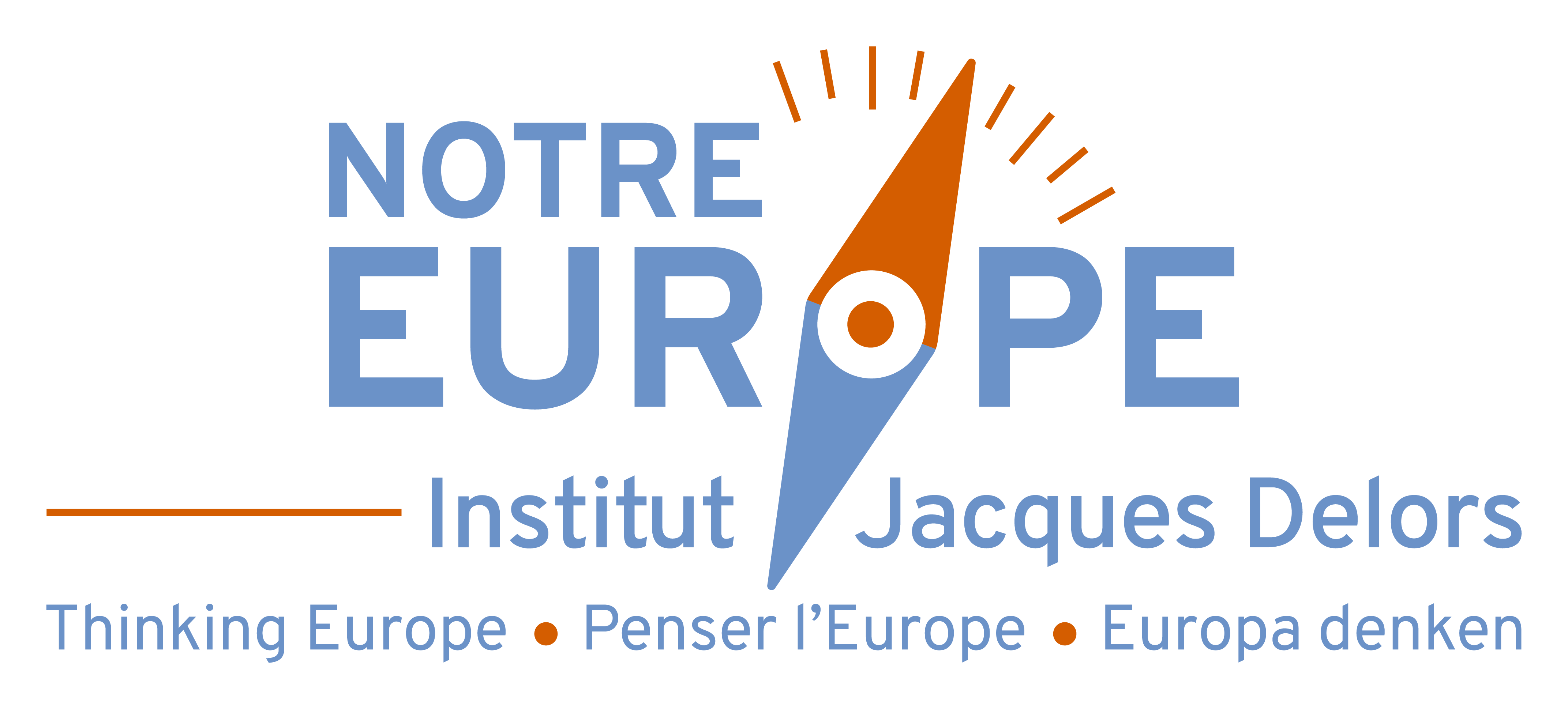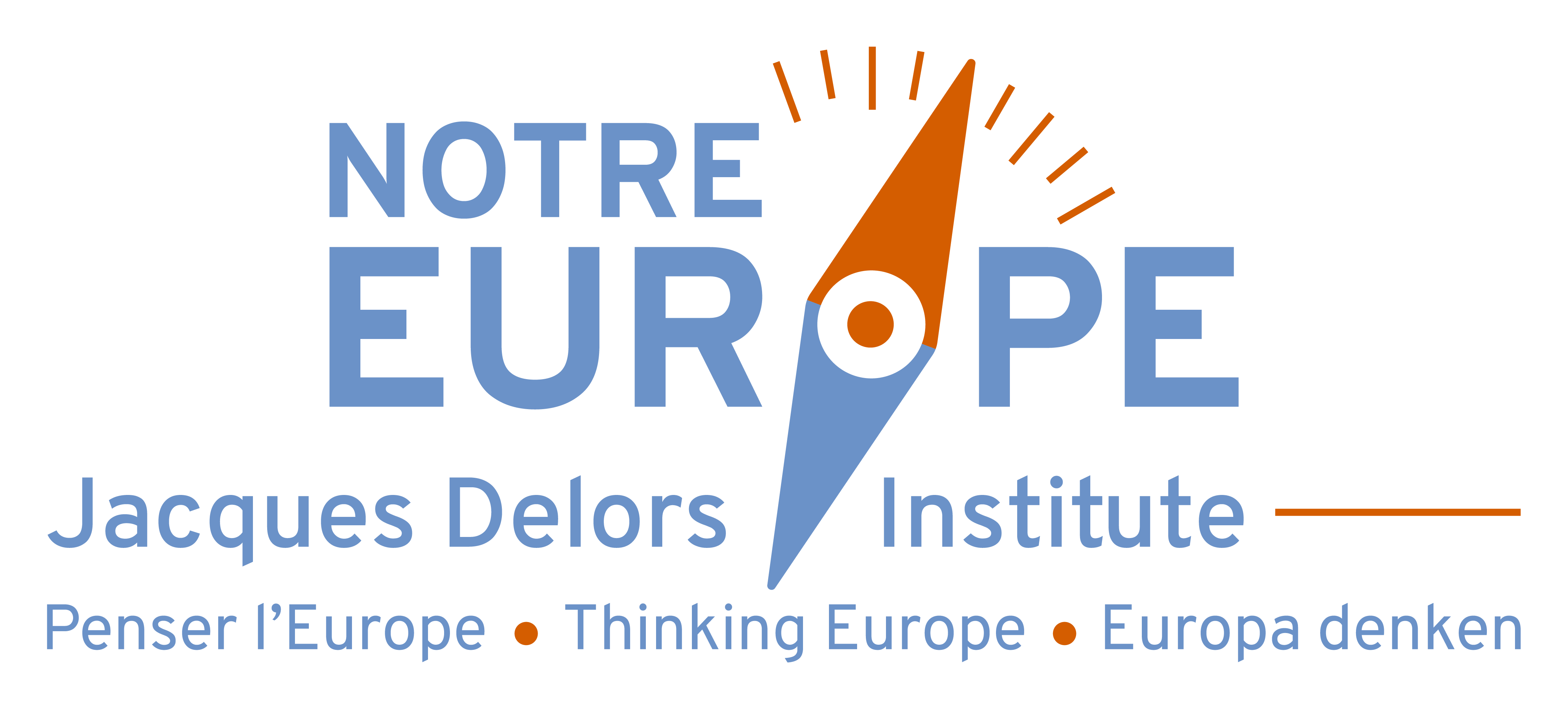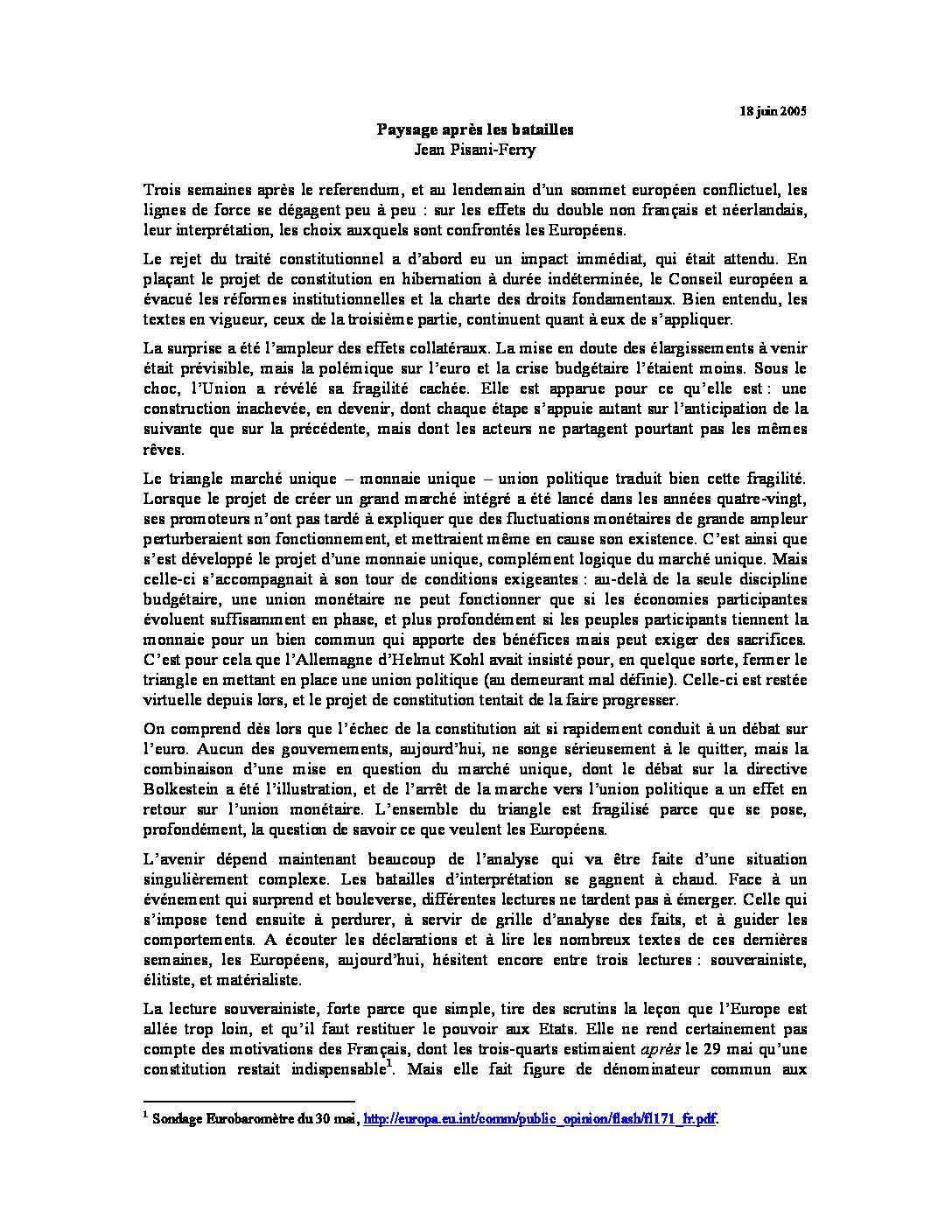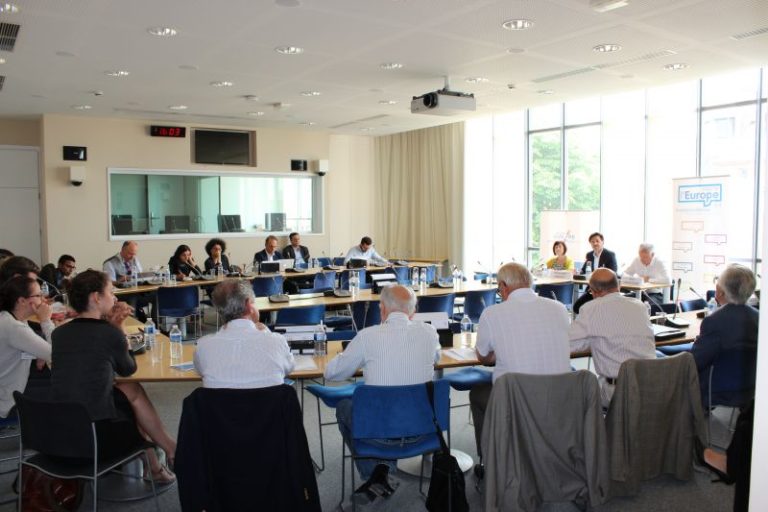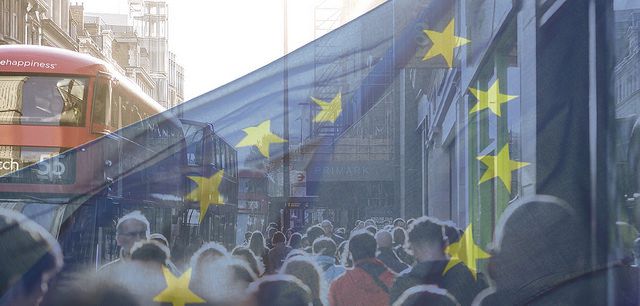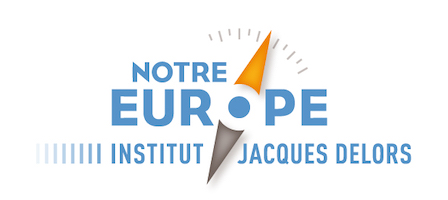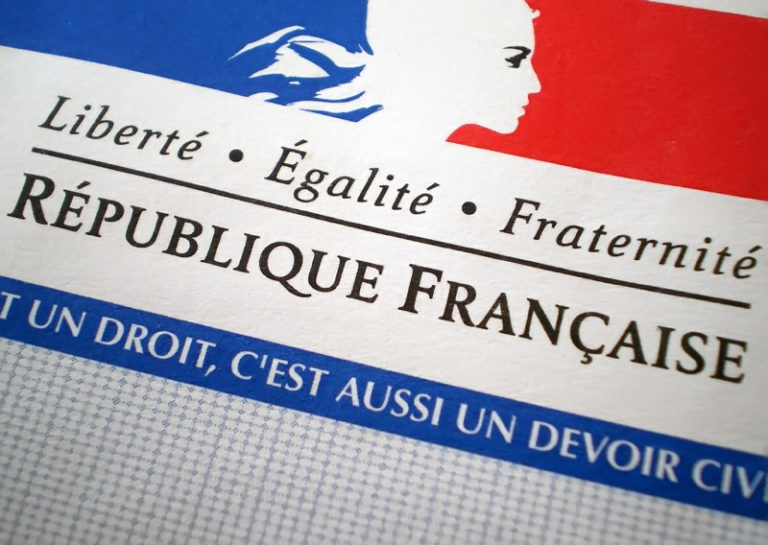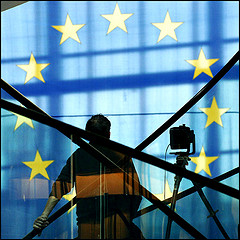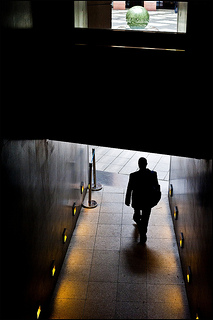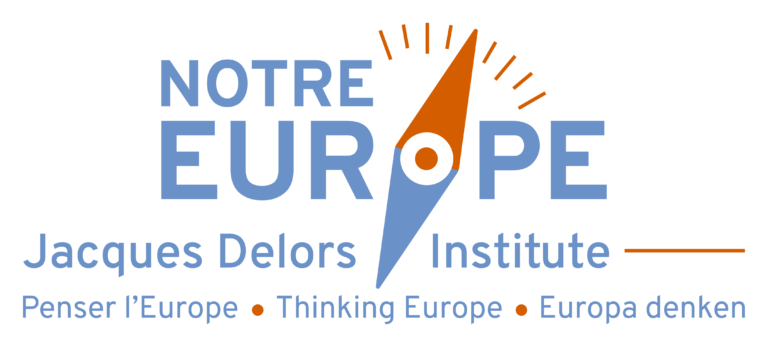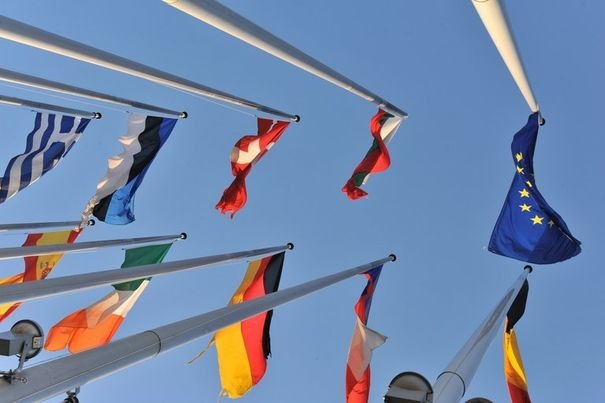Other document
Landscape after the battle
Trois semaines après les référendums et au lendemain du Conseil européen, l’auteur décrit le paysage européen et analyse les trois lectures possibles de la situation
Trois semaines après le référendum, et au lendemain d’un sommet européen conflictuel, les lignes de force se dégagent peu à peu : sur les effets du double non français et néerlandais, leur interprétation, les choix auxquels sont confrontés les Européens. Le rejet du traité constitutionnel a d’abord eu un impact immédiat, qui était attendu.
En plaçant le projet de constitution en hibernation à durée indéterminée, le Conseil européen a évacué les réformes institutionnelles et la charte des droits fondamentaux. Bien entendu, les textes en vigueur, ceux de la troisième partie, continuent quant eux de s’appliquer.
La surprise a été l’ampleur des effets collatéraux. La mise en doute des élargissements à venir était prévisible, mais la polémique sur l’euro et la crise budgétaire l’étaient moins. Sous le choc, l’Union a révélé sa fragilité cachée. Elle est apparue pour ce qu’elle est : un construction inachevée, en devenir, dont chaque étape s’appuie autant sur l’anticipation de la suivante, que sur la précédente, mais dont les acteurs ne partagent pourtant pas les mêmes rêves.
SUR LE MÊME THÈME
ON THE SAME THEME
PUBLICATIONS
European Democracy: What Are the Next Challenges

National Referendums on EU Issues: from Clarification to Frustration

The EU and referenda: three denials of democracy

The EU and referenda: structural incompatibility?

The EU and referenda on independence: a leap in the dark?

The Constitutional Treaty and the June Summit: A way forward?

How to Explain the Unexpected: An Assessment of the French Constitutional Referendum

Leading from behind: Britain and the European Constitutional Treaty

Can Europe’s Foreign Policy rekindle the Constitutional Process?

Constitutional referendum in France: a mid-term assessment

Letter to our European friends who want to Vote not

Draft Constitution? Why a “rear guard” should be established

The European constitution – a step in before for the EU

What can we learn from the Collapse of European Constitutional Project? A Response to Eight Critics

The Impact of the Television Media on the French Referendum Campaign in 2005

Plan B: How to Rescue the European Constitution

Reaction of Jeremy A. Rabkin to Andrew Moravcsik’s article on the collapse of the Constitutional treaty

Reaction of Mark N. Franklin to Andrew Moravcsik’s article on the collapse of the Constitutional treaty

Reaction of Giandomenico Majone to Andrew Moravcsik’s article on the collapse of the Constitutional treaty

Reaction of Loukas Tsoukalis to Andrew Moravcsik’s article on the collapse of the Constitutional treaty

Reaction of Pepper D. Culpepper and Archon Fung to Andrew Moravcsik’s article on the collapse of the Constitutional treaty

Reaction of Paul Magnette to Andrew Moravcsik’s article on the collapse of the Constitutional treaty

Reaction of James Fishkin to Andrew Moravcsik’s article on the collapse of the Constitutional treaty

Can you imagine a referendum to European level and under what conditions?

Referenda in other countries: the case of Spain

The First Dutch Referendum: a pre-ballot assessment

The Constitutional Treaty: What Now?

The European Constitution and deliberation: the Example of deliberative focus groups ahead of the French Referendum of 29 May 2005

Democratising European Democracy

The French “no” vote of 29 May 2005: understand, act

Securing a “Yes”: from Nice I to Nice II

“The Constitution, a step forward for the European Union” intervention by Jacques Delors

Ratification and Revision of the Consitutional Treaty

A new institutional equilibrium and collective sovereignty

MÉDIAS
MEDIAS
The referendum in Italy is not comparable with the Catalan crisis – Enrico Letta on RTL

“A political solution for Catalonia” – Enrico Letta on CNBC

« Catalonia is affraid to loose its identity in a Global World » – Enrico Letta in La Croix

